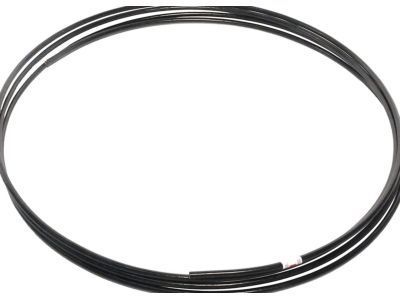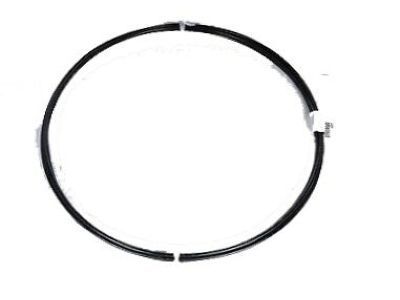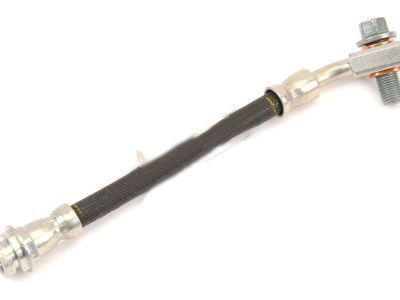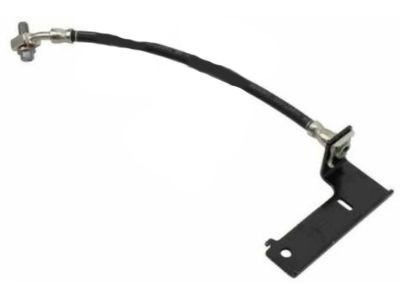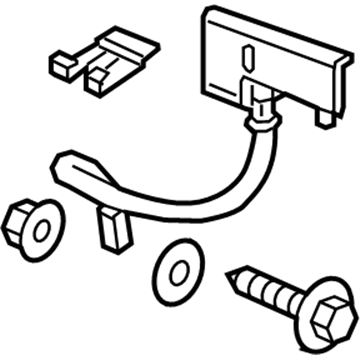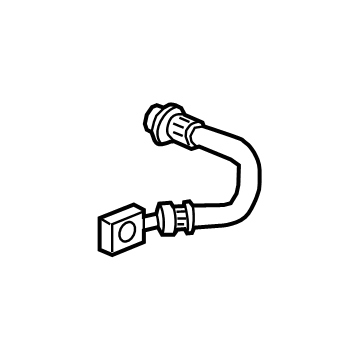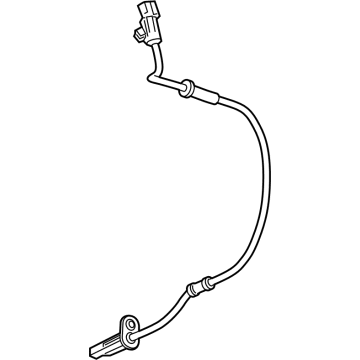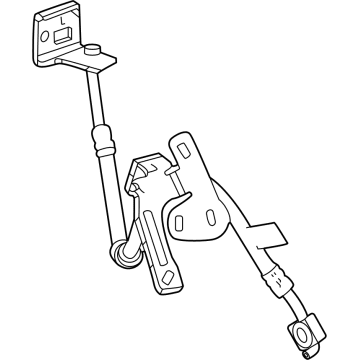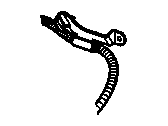My Garage
My Account
Cart
Genuine GMC Canyon Brake Line
Brake Hose- Select Vehicle by Model
- Select Vehicle by VIN
Select Vehicle by Model
orMake
Model
Year
Select Vehicle by VIN
For the most accurate results, select vehicle by your VIN (Vehicle Identification Number).
48 Brake Lines found
GMC Canyon Pipe Asm,Brake (Steel)(1/4" X 16 Ft Roll)
Part Number: 88936298$77.58 MSRP: $153.94You Save: $76.36 (50%)Ships in 1-2 Business DaysGMC Canyon Pipe,Brake
Part Number: 88983905$57.67 MSRP: $114.42You Save: $56.75 (50%)Ships in 1-3 Business DaysGMC Canyon Hose Assembly, Rear Brake
Part Number: 84244994$23.66 MSRP: $43.01You Save: $19.35 (45%)Ships in 1-3 Business DaysGMC Canyon Hose Assembly, Front Brake
Part Number: 84244993$12.60 MSRP: $64.86You Save: $52.26 (81%)Ships in 1-2 Business DaysGMC Canyon PIPE ASM-BRK PRESS MOD VLV (SECD)
Part Number: 84687452$21.43 MSRP: $60.73You Save: $39.30 (65%)Ships in 1-3 Business DaysGMC Canyon Hose Assembly, Rear Brk (Rh Proc)
Part Number: 84244995$16.95 MSRP: $31.97You Save: $15.02 (47%)Ships in 1-2 Business DaysGMC Canyon HOSE ASM-RR BRK C/OVR
Part Number: 84269094$24.35 MSRP: $44.28You Save: $19.93 (46%)Ships in 1-2 Business DaysGMC Canyon Hose Assembly, Rear Brake Crossover
Part Number: 84244991$22.95 MSRP: $41.15You Save: $18.20 (45%)Ships in 1-2 Business DaysGMC Canyon Pipe Assembly, Brk Press Mod Vlv (Prim)
Part Number: 84687451$32.18 MSRP: $60.72You Save: $28.54 (47%)Ships in 1-3 Business DaysGMC Canyon PIPE ASM-FRT BRK
Part Number: 84716088$38.86 MSRP: $69.70You Save: $30.84 (45%)Ships in 1-2 Business DaysGMC Canyon Hose Assembly, Rear Brk (Rh Proc)
Part Number: 84463253$5.78 MSRP: $10.36You Save: $4.58 (45%)Ships in 1-3 Business DaysGMC Canyon Hose Assembly, Rear Brk
Part Number: 84463252$5.86 MSRP: $10.52You Save: $4.66 (45%)Ships in 1-3 Business DaysGMC Canyon HOSE ASM-RR BRK
Part Number: 85580039$14.10 MSRP: $25.29You Save: $11.19 (45%)Ships in 1-2 Business DaysGMC Canyon HOSE ASM-RR BRK
Part Number: 85580037$14.95 MSRP: $26.82You Save: $11.87 (45%)Ships in 1-2 Business DaysGMC Canyon HOSE ASM-RR BRK
Part Number: 85580038$14.95 MSRP: $26.82You Save: $11.87 (45%)Ships in 1-2 Business DaysGMC Canyon HOSE ASM-FRT BRK
Part Number: 85539477$21.95 MSRP: $39.38You Save: $17.43 (45%)Ships in 1-2 Business Days
| Page 1 of 3 |Next >
1-20 of 48 Results
GMC Canyon Brake Line
The function of the Brake Line in GMC Canyon is to permit the braking fluid from the master cylinder to go to the brake caliper pistons, which will allow the hydraulic braking system to work. Steel brake lines are notorious for rusting and getting damaged through impact and this can make it difficult for the hydraulic fluid to flow through and build up the required pressure required. Brake hoses also degrade mechanically and chemically which may also lead to physical and internal damages that will compromise the brake system. When replacement is necessary, the pre bent brake line kits and the corrosion resistant stainless steel hoses are easy to fix. Most Touring cars come fitted with flexible rubber hoses and replacing this with braided stainless steel hoses give the driver a much better pedal feel and reaction for high speed dynamic man oeuvres.
Each OEM GMC Canyon Brake Line we offer is competitively priced and comes with the assurance of the manufacturer's warranty for the part. Furthermore, we guarantee the speedy delivery of your orders right to your doorstep. Our hassle-free return policy is also in place for your peace of mind.
GMC Canyon Brake Line Parts Questions & Experts Answers
- Q: How to inspect and replace rubber brake hoses and brake line on GMC Canyon?A: Every six months, it is important to inspect the rubber hoses that connect the steel brake lines with the front and rear brake assemblies for any cracks, chafing, leaks, blisters, or other damage. This inspection should be thorough, using a light and mirror if necessary. If any of these conditions are found, the hose should be replaced with a new one. To replace the front flexible brake hoses, start by loosening the wheel lug nuts and raising the vehicle on jackstands. Remove the wheel and unscrew the brake line fitting from the hose at the bracket. Use a flare-nut wrench to prevent rounding off the corners of the fitting nut. Remove the clip from the bracket and detach the hose. At the caliper end of the hose, remove the inlet fitting bolt and separate the hose from the caliper. Replace the copper sealing washers with new ones. To install the hose, connect the fitting to the caliper with the inlet fitting bolt and new sealing washers. Route the hose into its original location, ensuring it isn't twisted, and tighten the hose bracket bolt securely. Connect the brake line fitting and tighten it securely. Bleed the caliper, install the wheel, lower the vehicle, and tighten the lug nuts. For the rear flexible brake hose replacement, raise the rear of the vehicle on jackstands and block the front wheels. Unscrew the brake line fitting from the hose at the chassis end using a flare-nut wrench. Remove the clip from the bracket and detach the hose. At the brake fitting junction block on top of the left side of the rear axle housing, remove the hose from the junction block. To install the hose, connect the fitting to the junction block with a new sealing washer. Route the hose into its original location, ensuring it isn't twisted, and secure it with its clip. Connect the brake line fitting and tighten it securely. Bleed the rear brakes, install the wheel, lower the vehicle, and tighten the lug nuts. When replacing metal brake lines, use the correct parts and avoid using copper tubing. Prefabricated brake lines are available and must be bent to the proper shapes using a tubing bender. Ensure the new line is securely supported in the brackets and has enough clearance between moving or hot components. Check the master cylinder fluid level, add fluid if necessary, bleed the brake system, and test the brakes before driving the vehicle in traffic.
Related GMC Canyon Parts
Browse by Year
2024 Brake Line 2023 Brake Line 2022 Brake Line 2021 Brake Line 2020 Brake Line 2019 Brake Line 2018 Brake Line 2017 Brake Line 2016 Brake Line 2015 Brake Line 2012 Brake Line 2011 Brake Line 2010 Brake Line 2009 Brake Line 2008 Brake Line 2007 Brake Line 2006 Brake Line 2005 Brake Line 2004 Brake Line

